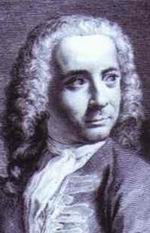
Venetian vedute painter working largely for the English markel and mainly resident in England 1746-55.
He trained first as a scene painter under his father Bernardo Canal, and worked with his father and brother Cristoforo in theatres in Venice and Rome, 1719-20.
Little is known of his training in easel painting, although he must have studied the work of older vedutisti such as Van Wittel (Vanvittelli) and Carlevaris.
Canaletto’s early pictures for local patrons are carefully, but freely, painted and based on individual studies. They include his masterpiece. The Stone Mason’s Yard (1725-26).
He soon discovered, however, that the mass production of pictures of celebrated sights for tourists paid better than the painting of individual masterpieces. He therefore streamlined his technique, trained a studio of assistants, one of whom was his nephew Bernardo Bellotto, and turned out a steady stream of formulaic, brightly lit pictures, based on a repertoire of drawings from panoramas projected in a camera obscura.
His connections with English tourists, strengthened by an association with the famous collector, later British consul to Venice, Joseph Smith, led him to follow his clients to England when the 1741 War of the Austrian Succession made travel on the continent hazardous. But, alter a promising start, his English paintings disappointed, and they, and his later Venetian works, show a marked decline from his former achievements.
Nonetheless, in 1763, after two unsuccessful earlier attempts, Canaletto was finally elected to the Venetian Academy.
While few major paintings remain in Italy, there are innumerable pictures by him in England, and many in the USA and on the continent.
Canaletto’s luminous etchings are also to be found in many collections and prinrrooms, including Venice, Correr.
